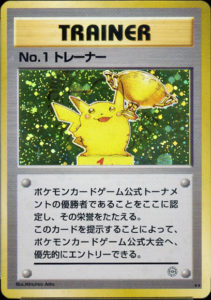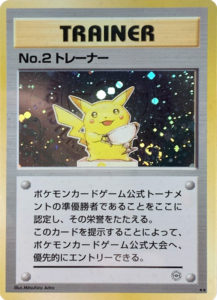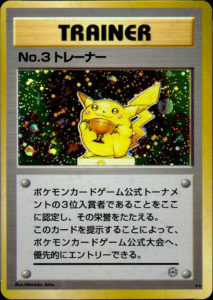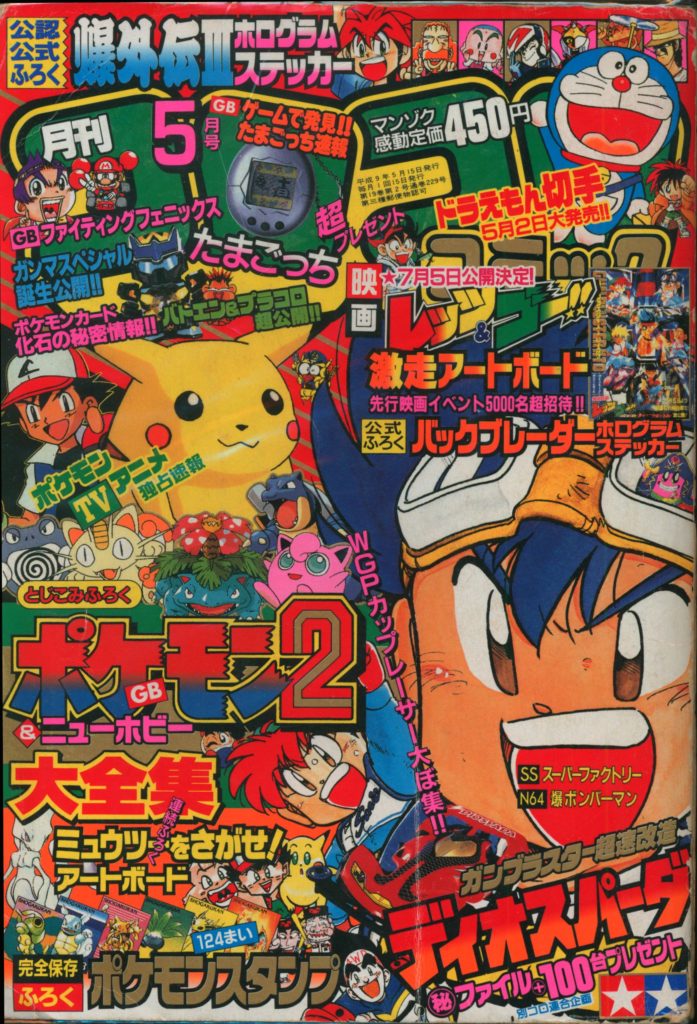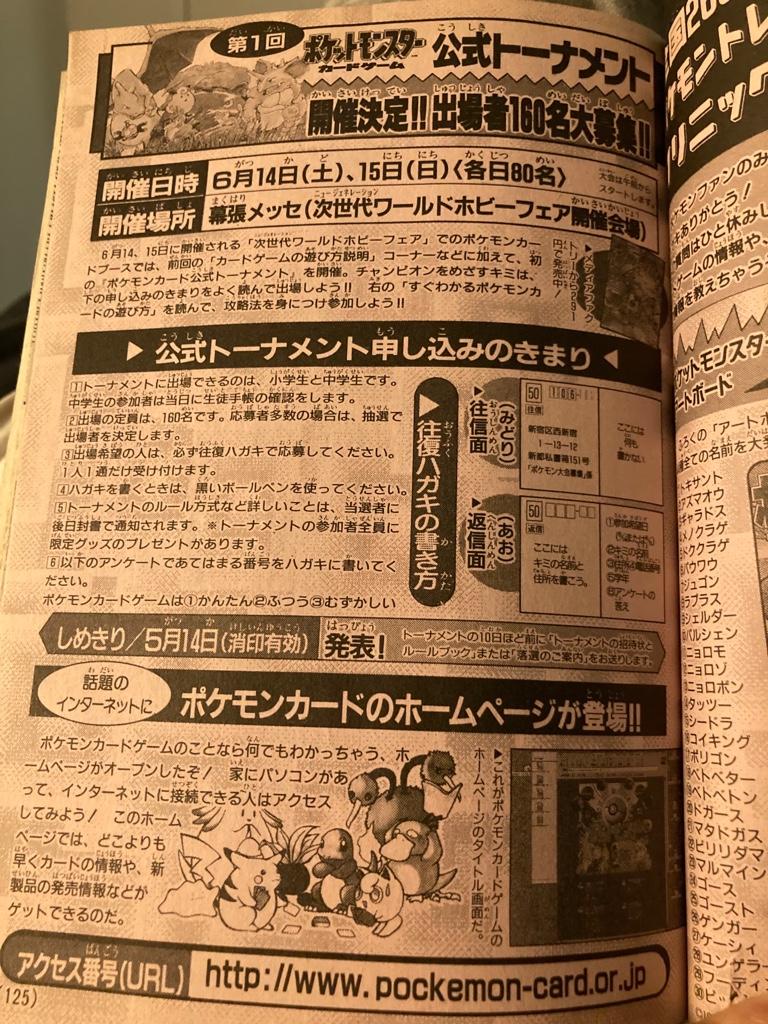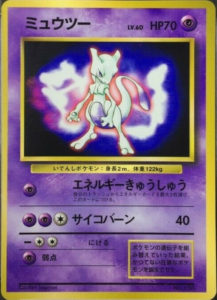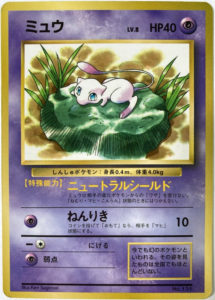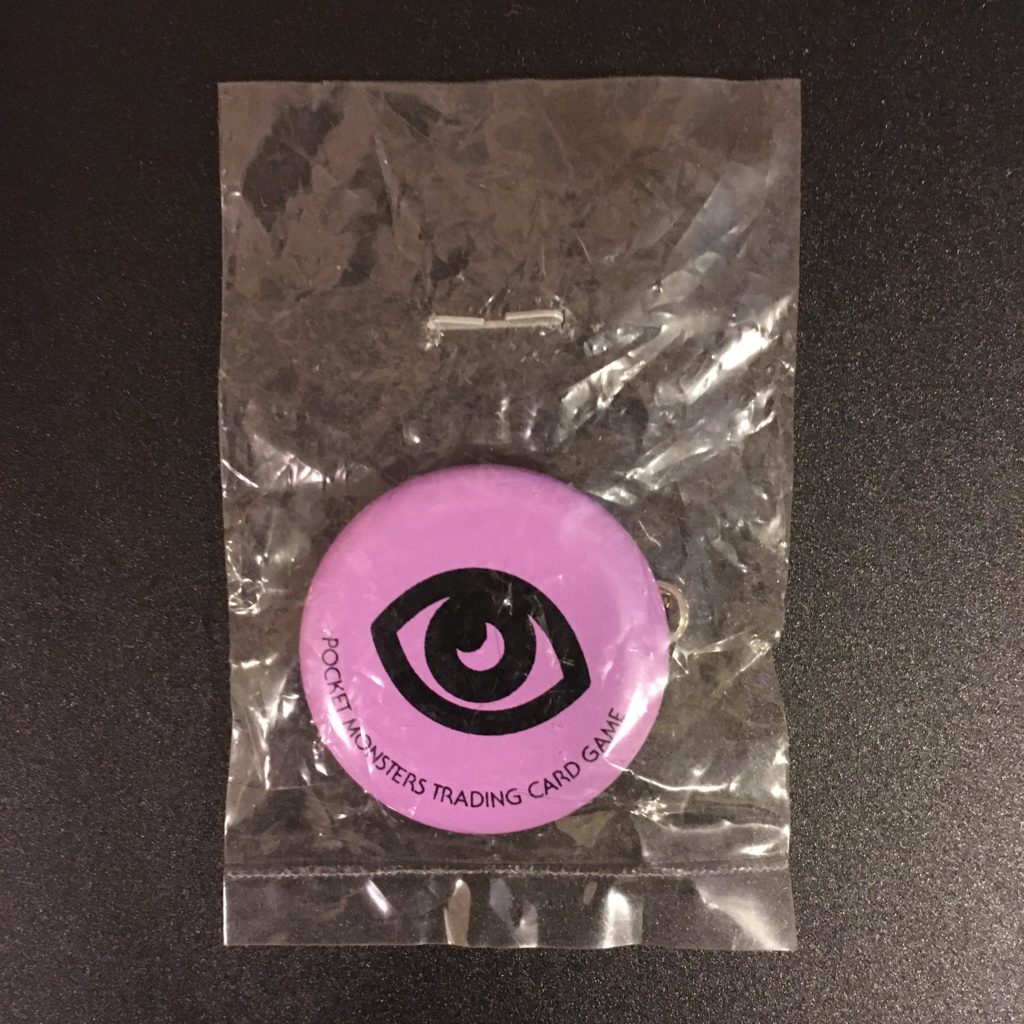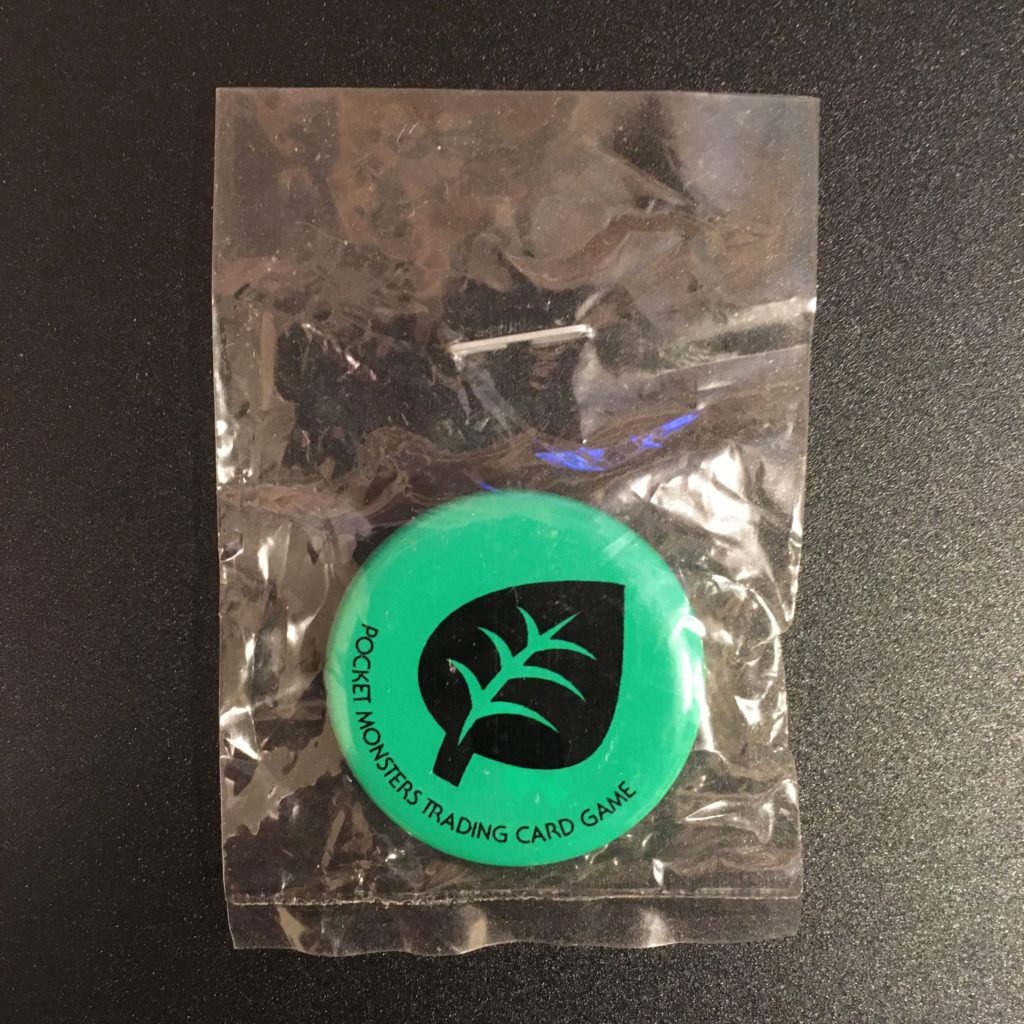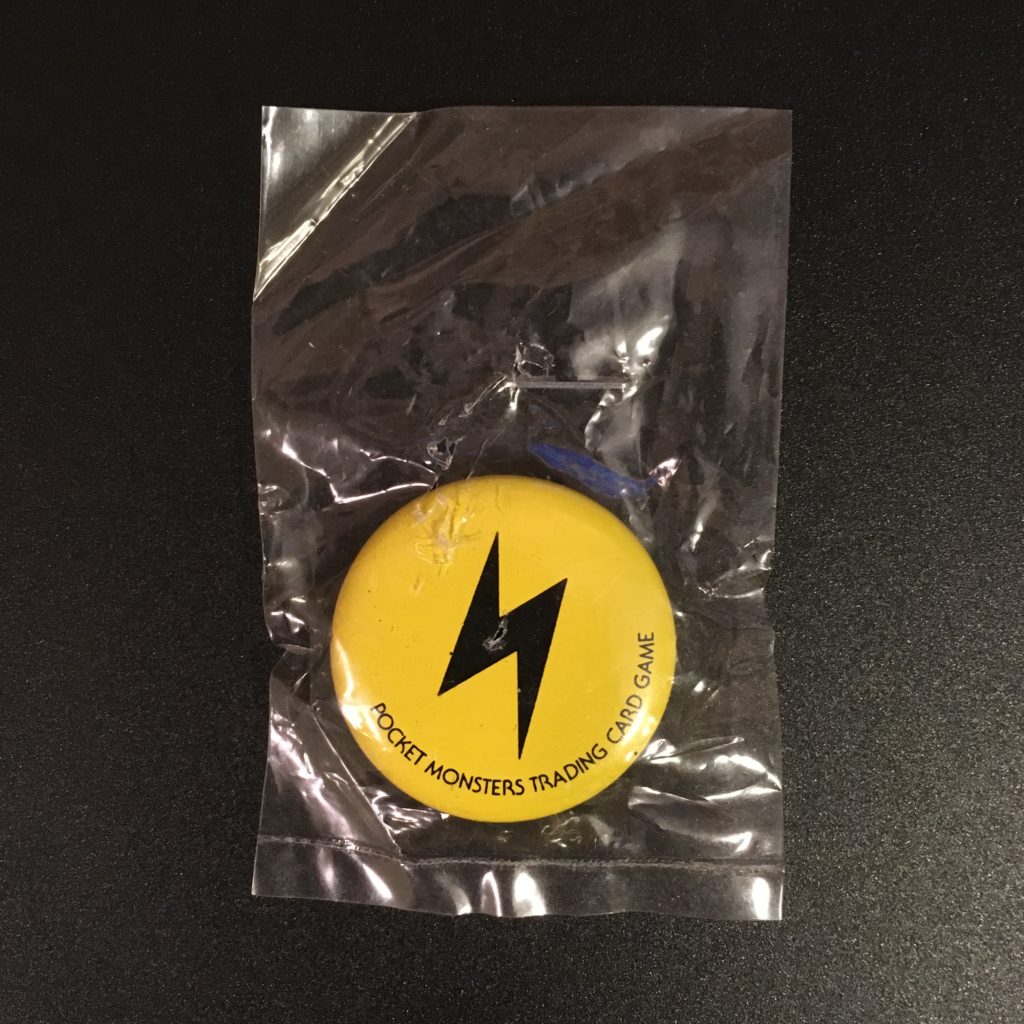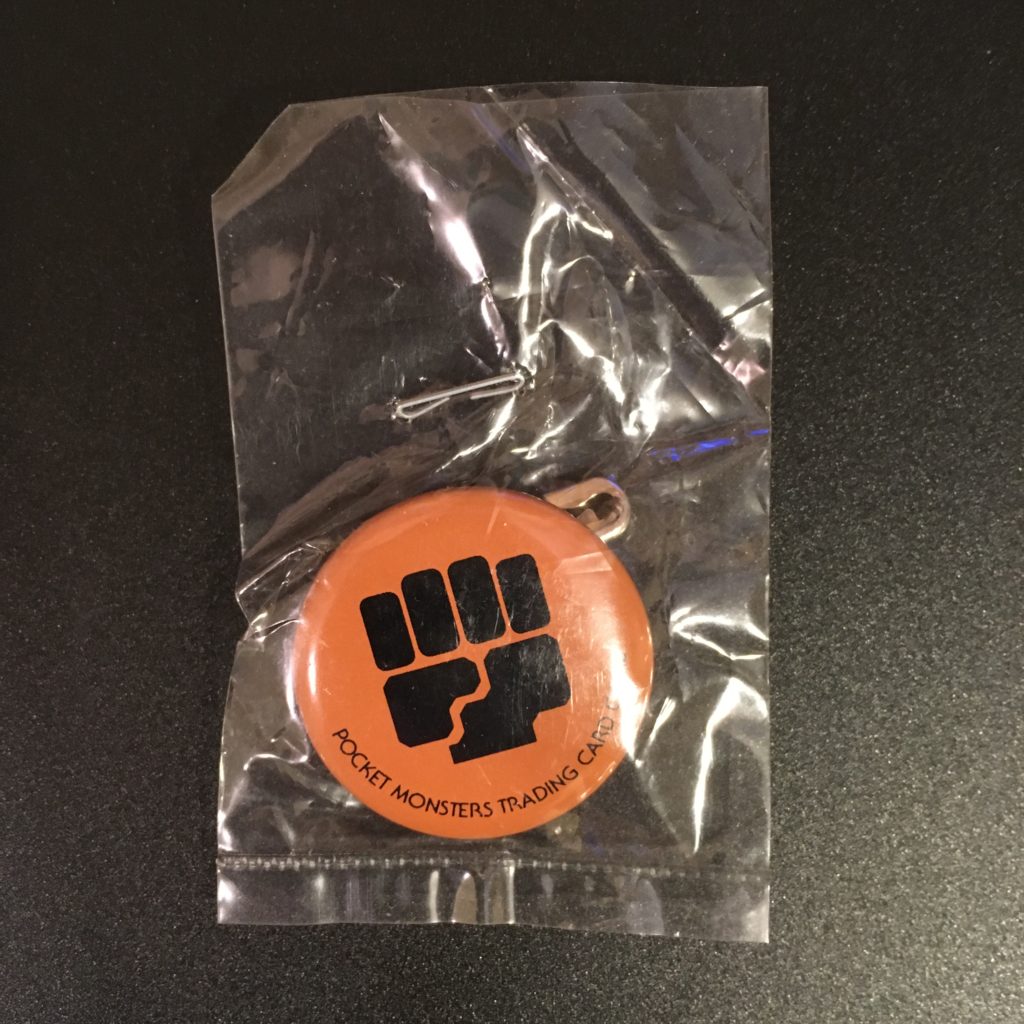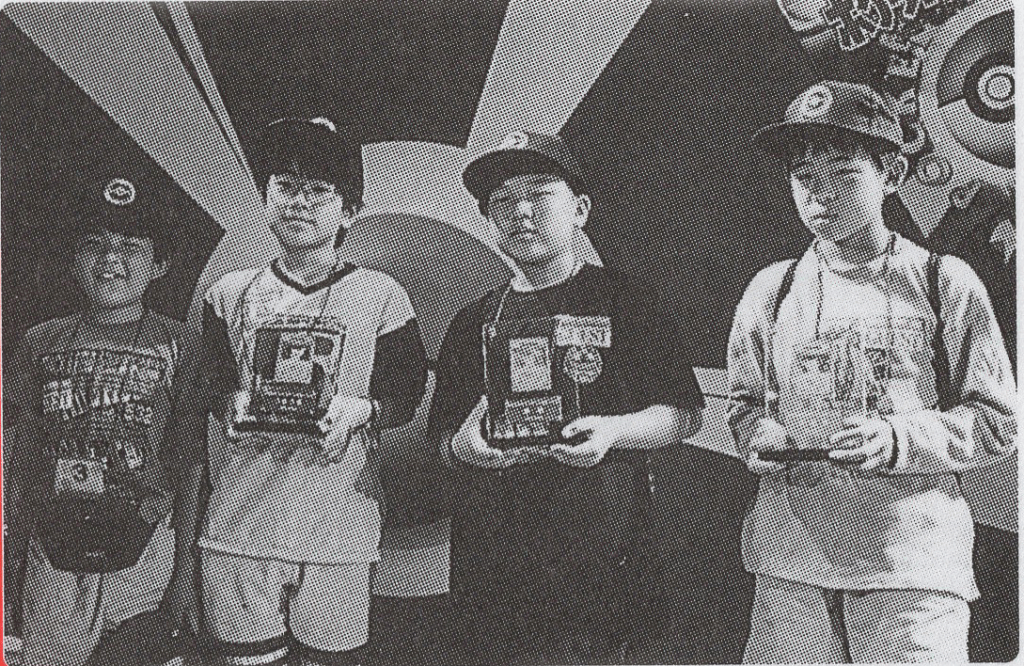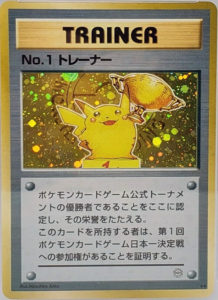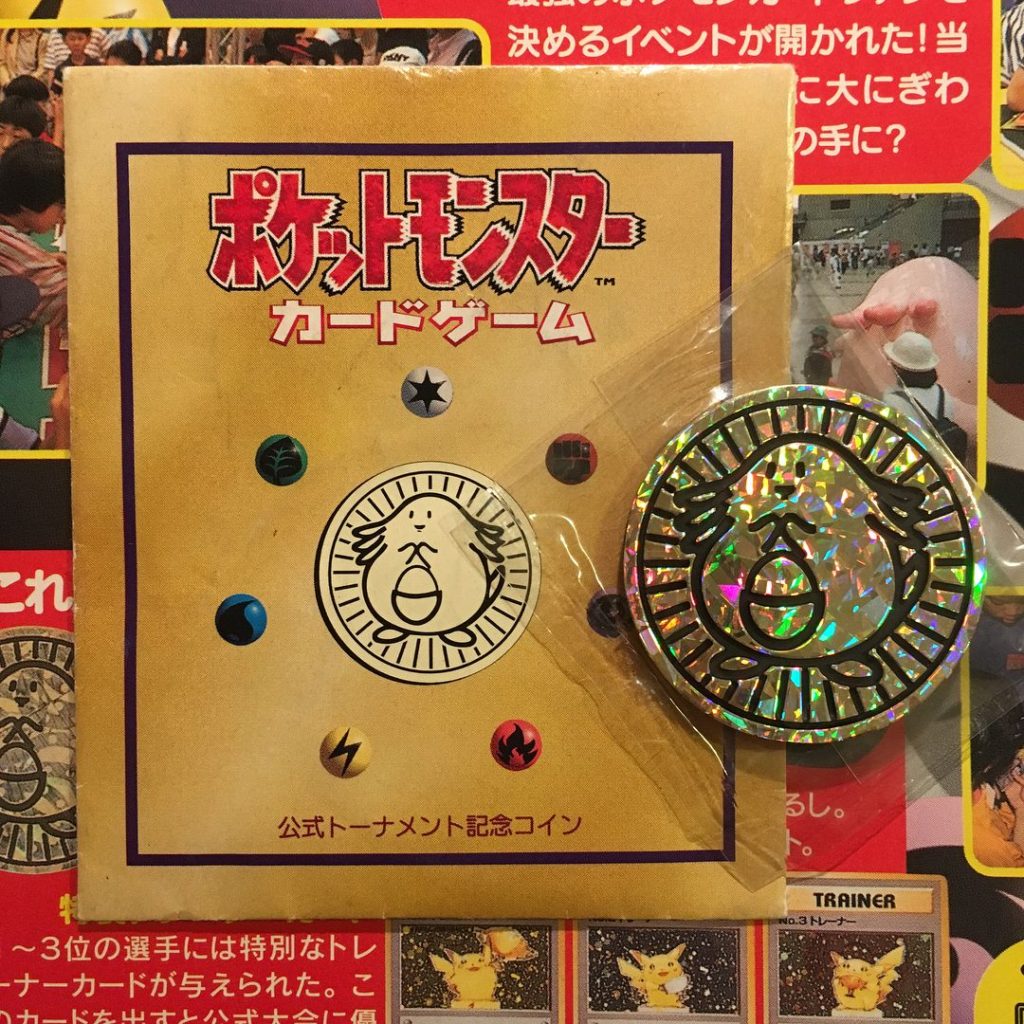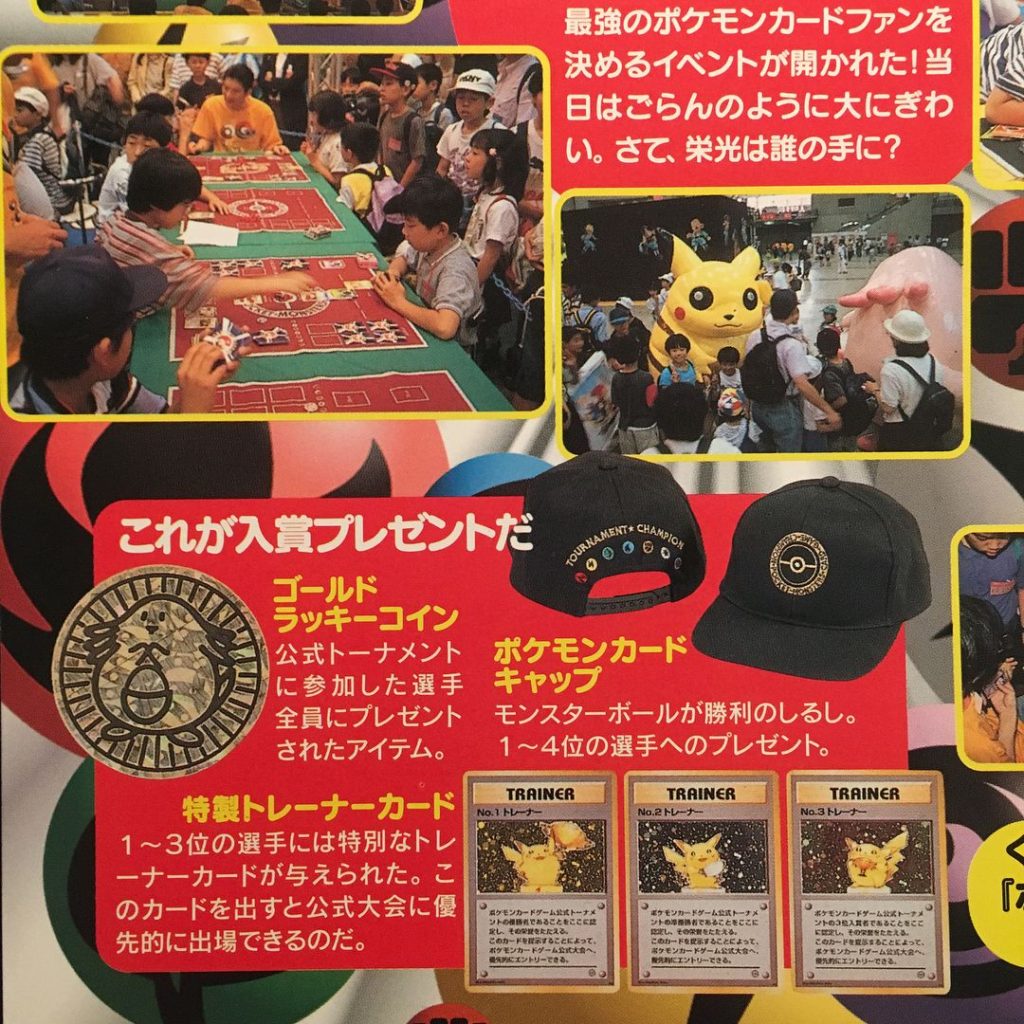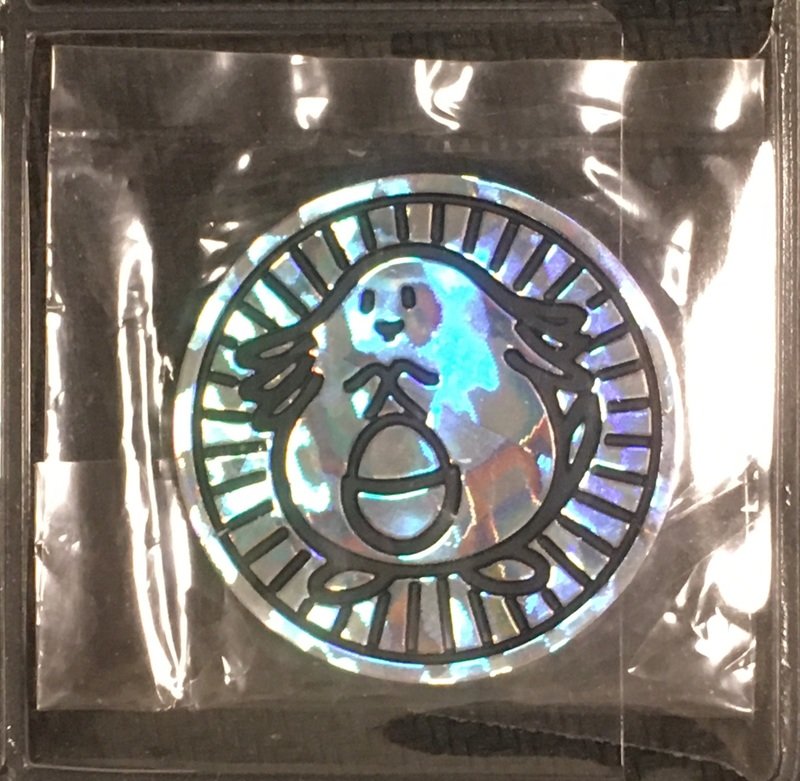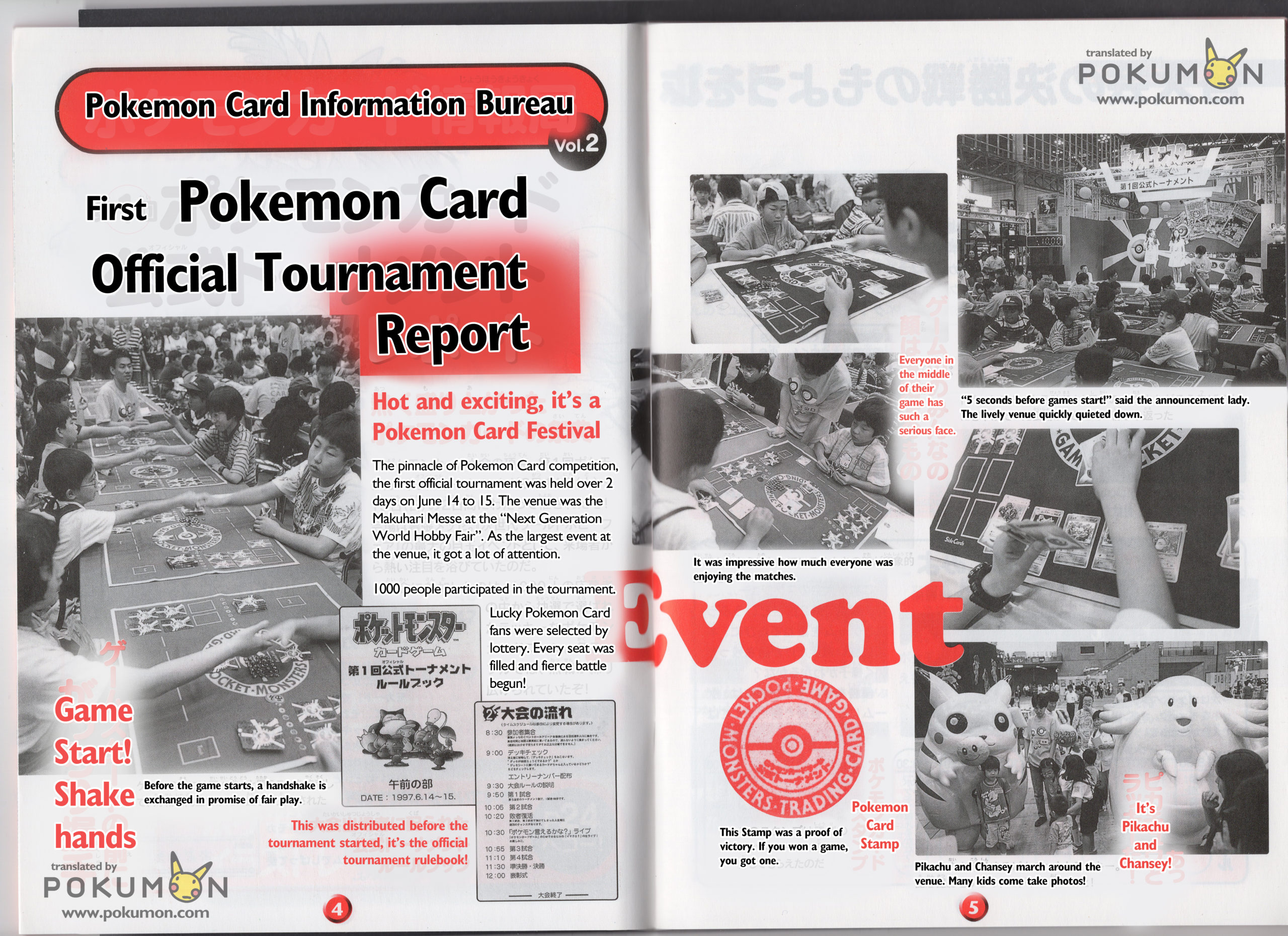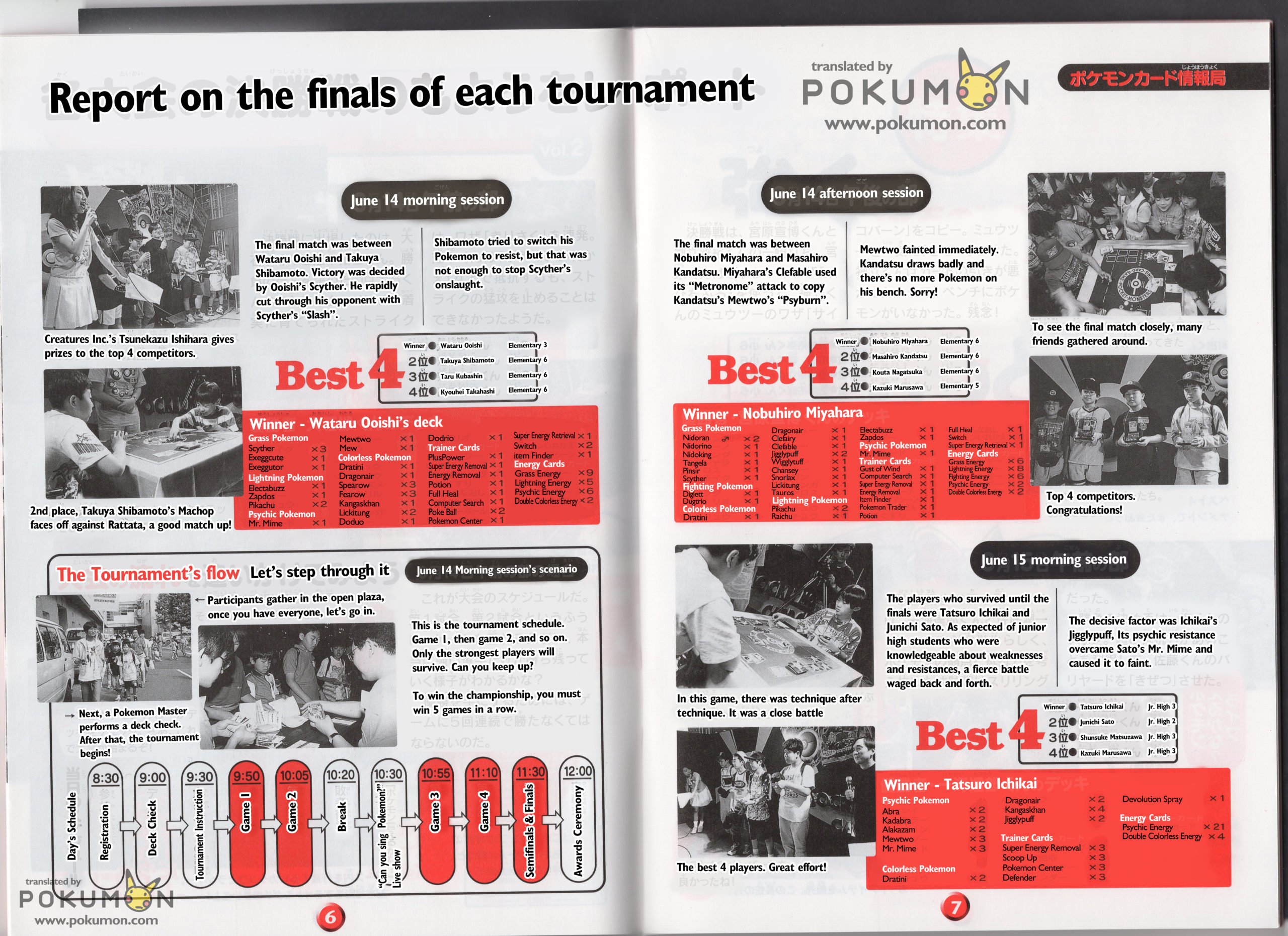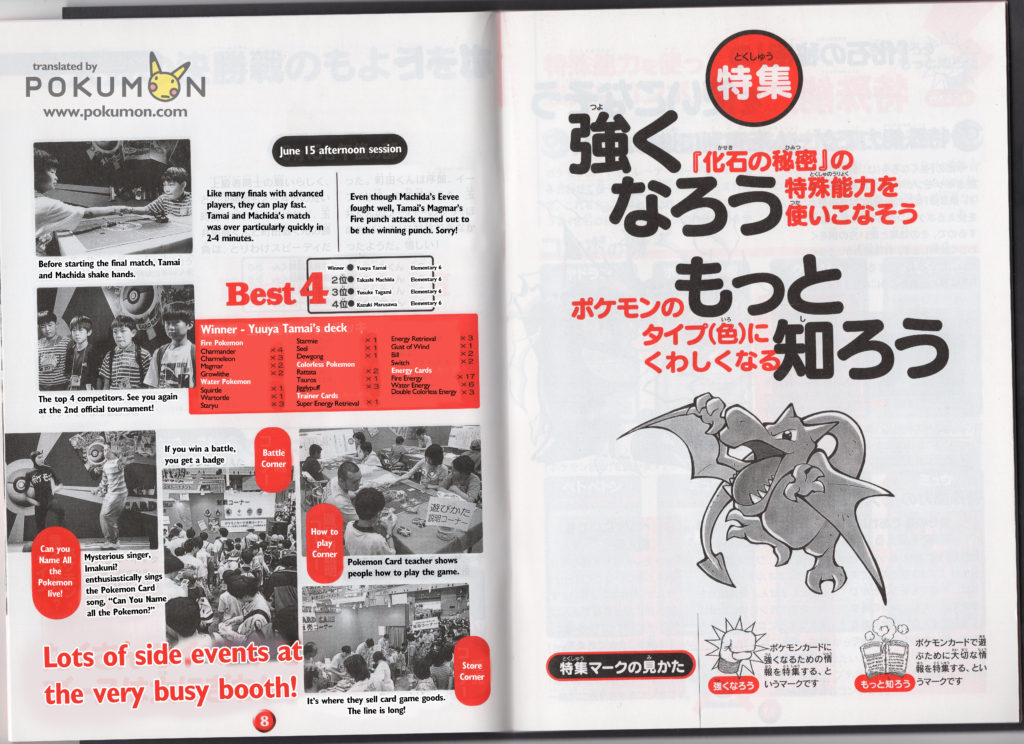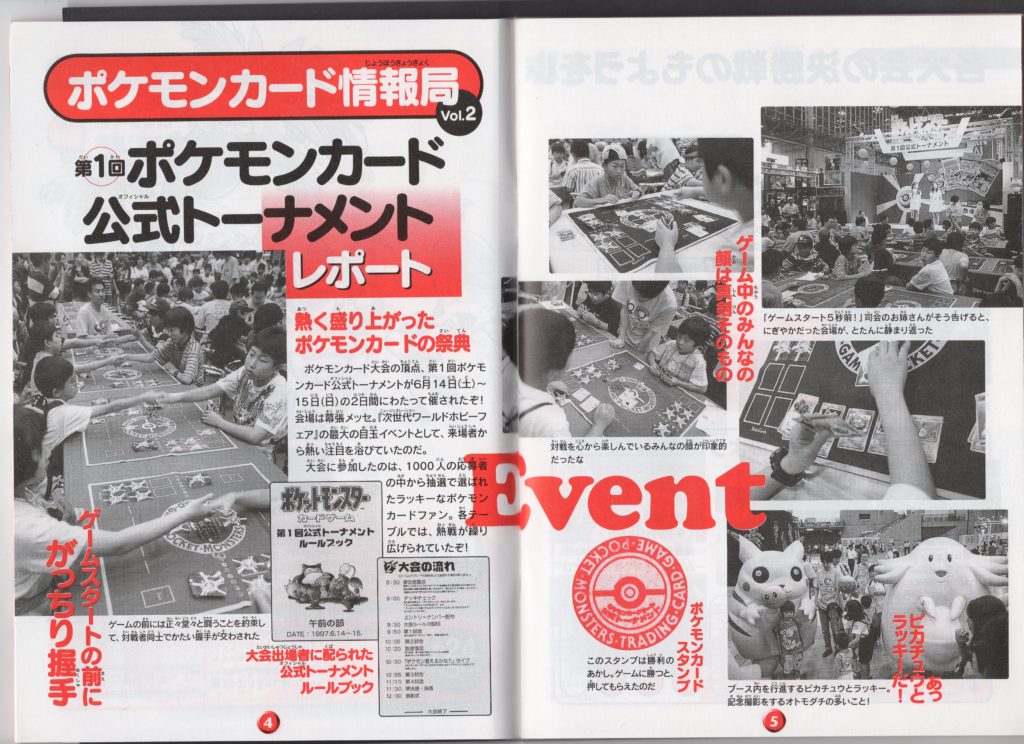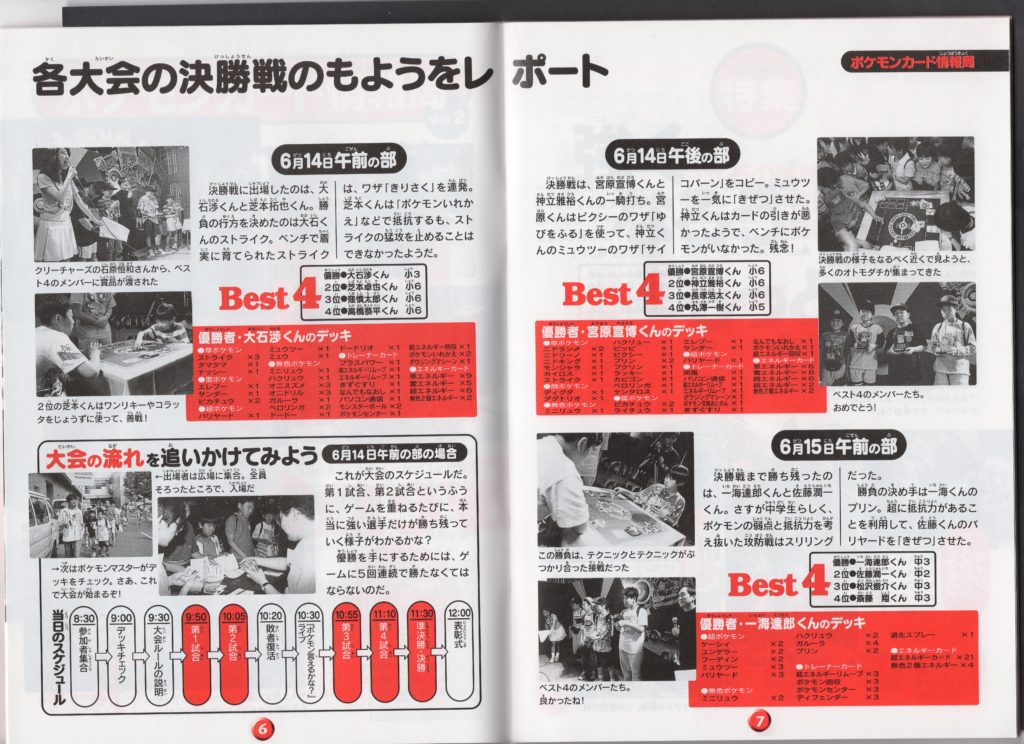The first official Pokemon TCG tournament happened June 14 – 15, 1997 at the Makuhari Messe Event Hall in Chiba, Japan. The venue was hosting the 6th “Next Generation World Hobby Fair”, and the tournament was one of the largest exhibits at the venue.
The tournament was notable for many reasons. It was the first official tournament for the TCG, and marked the start of regional, national, and international organized play. This tournament is also the origins of the No.1, 2, and 3 trainer trophy cards which would later be given out to top winners at subsequent tournaments.
Much of the information in this article is sourced from Pokemon Card Fan Club Magazine Vol.2’s tournament report. It is one of the few, if not only, written accounts of the tournament. We’ve translated the full 4-page report for usage in this article.
Qualification
Unlike future tournaments, the first official tournament had no real skill-based qualifiers. Instead, 1000 participants (kids up to age 15) were selected by lottery to participate.
Up to 160 participants were able to register ahead of time via postcard. Instructions for this were distributed in the May 1997 issue of CoroCoro Magazine, which was published earlier in April. There was a deadline of May 14 to pre-register via this method, and if too many people applied to pre-register, a lottery would be held to determine who got to enter.
Selected participants gathered outside, and once everyone was there a staff member led them into the venue. Staff members performed deck checks to ensure valid decks from each participant.

Because players were admitted via lottery instead of via skill-testing qualifiers, the winning decklists are all very unrefined in terms of competitiveness. Many didn’t run full evolution trees (ex: Squirtle and Wartortle, but no Blastoise), or ran many single copies of trainer cards. Curiously, only one of the decks ran Bill (one of the game’s most powerful trainers), and it only ran 2 copies.
Only one out of the four winners ran a deck (Alakazam Damage Swap) that would be powerful enough to exist in the early Pokemon TCG metagame.
Format
All released cards up until the Jungle expansion, even promo cards, were legal. This is evidenced by the presence of Super Energy Retrieval (promo released May 20, 1997), promotional Mewtwo with Psyburn (promo released May 20, 1997), and Mew (promo released February 20, 1997) in decklists. The Fossil expansion with the first set printing of Mew would not be released until June 21, 1997, which was 7 days after the tournament had taken place.
Tournament Structure
Players would play up to 5 games. Losing a single game that you were out of the tournament.
Most rounds were quite short by modern tournament standards. They lasted anywhere from 15 minutes for the first 4 rounds, to 20 minutes for the semifinals / finals.
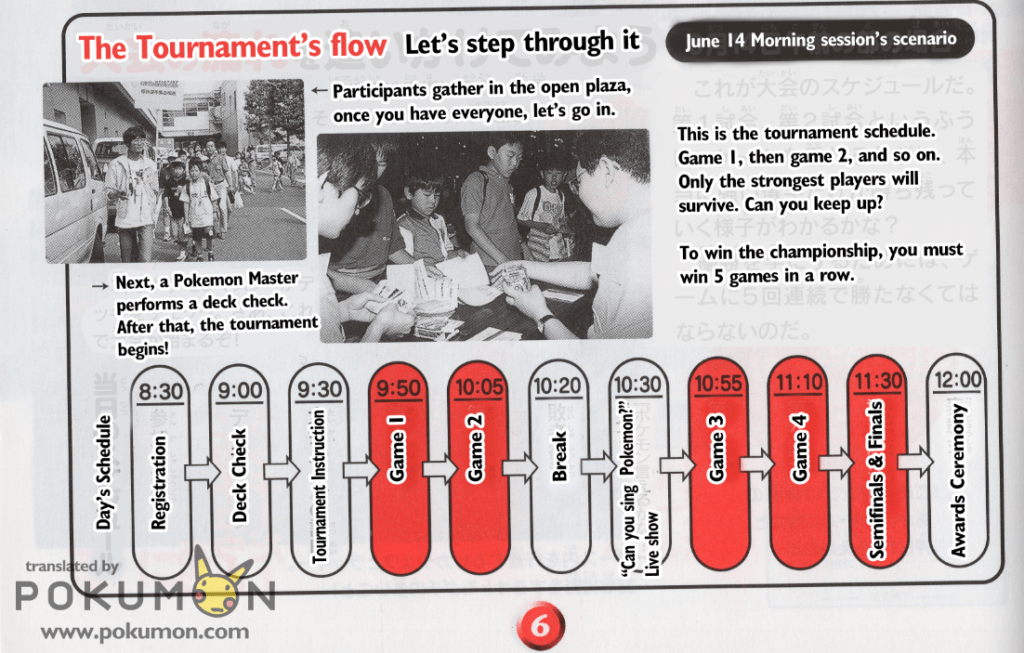
The tournament took place over the course of 2 days, with a morning and afternoon session held each day. This meant that there were 4 total tournaments ran, resulting a total of 4 copies of each No.1-3 trainer card. For those were lucky enough to preregister via postcard, each tournament supported up to 40 pre-registered players.
June 14 Morning Session
The first tournament session was restricted to elementary school children. The winner was Wataru Ooishi, defeating grade 6 Takuya Shibamoto with his Grass / Lightning / Psychic deck. As an elementary school 3rd grader, he is also the youngest out of the 4 champions.
There is a Mew card in Ooishi’s winning decklist. Since this tournament took place before Fossil’s Mew was released, this was the 1997 promo mew from CoroCoro’s February issue.
June 14 Afternoon Session
The afternoon session was also restricted to elementary grade students. The top 4 was occupied by kids grades 5-6 (Japanese elementary school typically ends at grade 6). The champion, Nobuhiro Miyahara, ran a Grass / Fighting / Lightning deck.

Notably, the tournament commentary discusses how Miyahara used his Jungle Clefable’s Metronome attack to copy his opponent’s (Masahiro Kandatsu) Mewtwo’s Psyburn attack, meaning that Kandatsu was using the 1997 promo from the Pocket Monsters Fan Book instead of the Base Set one.
June 15 Morning Session
The second day’s morning session allow players up to junior high to participate (usually around 15 years old). Tatsuro Ichikai (Jr. High grade 3) became the tournament’s oldest champion with his prototypical Damage Swap deck.
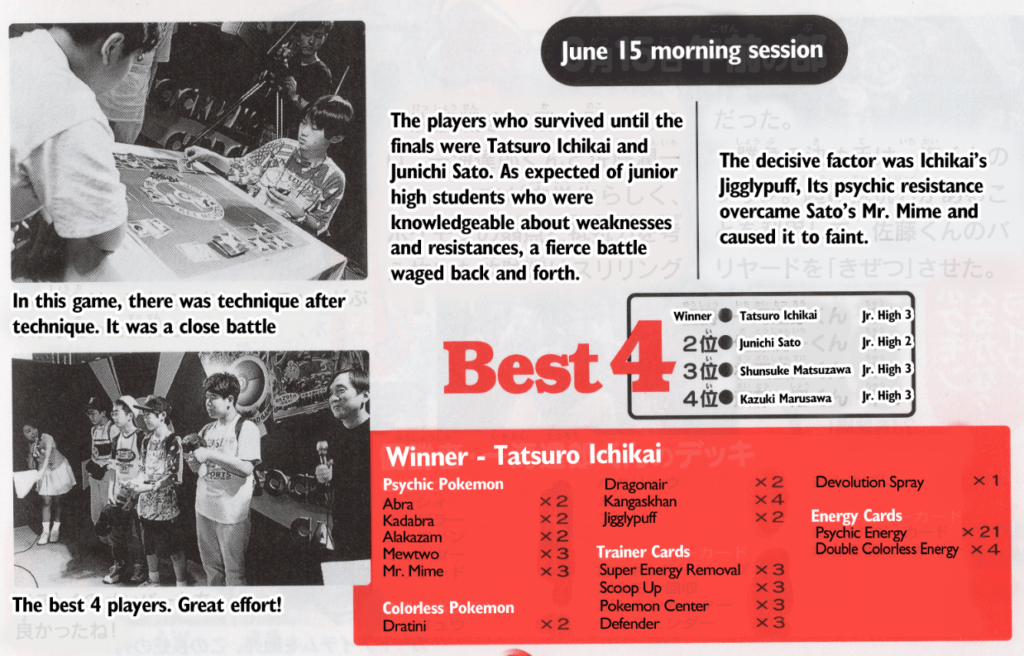
The 2 copies of Jungle Jigglypuff (without any Wigglytuffs) show a level of metagaming not present in the younger competitors’ deck lists. This card was often brought in to counter opposing Mr. Mimes, as its Pound attack could pierce through Mr. Mime’s Pokemon Power, and it completely resisted Mr. Mime’s Meditate attack. This suggests that even early in the TCG’s life, older competitors had crafted archetypes that would be later be well-known in the competitive scene.
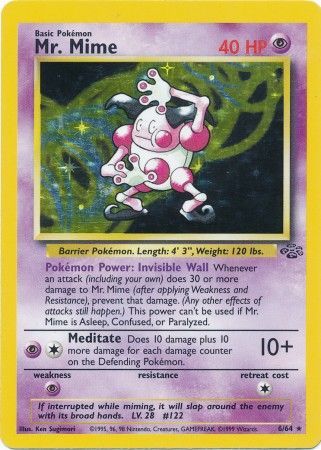
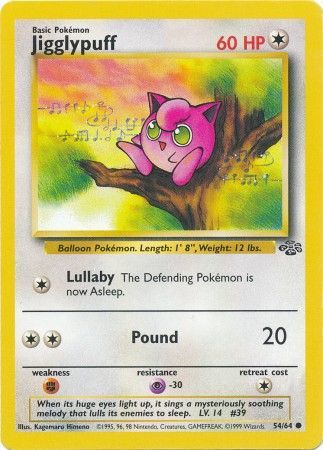
June 15 Afternoon Session
The final session of the 1st Official Tournament was again restricted to Elementary school aged children. The winner, Yuuya Tamai, used a Fire / Water deck that featured Charmander and Charmeleon (but curiously, not Charizard).

The caption on the report for the final session also mentions the 2nd official tournament, which would go on to be the 1998 Lizardon (Charizard) Mega Battle.
Venue Areas / Activities
The 1st Official Tournament featured a number of side events and activities for attendees.
Live Performance Stage
The main stage area was used for announcements, live performances, and the awards ceremonies. It featured a backdrop reminiscent of the old Japanese Pokemon card back.
Battle Corner
This was a area where players could queue up for ad-hoc battling. Winner a battle got participants a random badge with an energy symbol. These differed slightly from the badges given out at the later events, as they had the old “Pocket Monsters” name rather than the more contemporary “Pokemon” one.

How to Play Corner
This is an area where staff members would teach children how to play the game.

Store Corner
As with most events, there was a store where accessories and memorabilia would be purchased.

Outside area
Outside the venue, there were staff members in Pikachu and Chansey costumes taking pictures with attendees.
Prizes & Memorabilia
Winners of each of the 4 tournament sessions each received a No.1-3 Trainer trophy card (3rd and 4th both got No.3 cards) encased in an acrylic trophy stand. Each of them also received an exclusive baseball cap.
Trophy Differences
The 1st official tournament No.1-3 trainer cards and trophies are often confused with the 1997 – 1998 Charizard Mega Battle’s due to some rather vague working on the trophy case and on the trophy card. Below are the two No.1 Trainer cards side-by-side, as well as their text translations.
The Pokémon Card Game Official Tournament’s champion is recognized here, and this honor is praised.
1st Official Tournament version text
By presenting this card, you may gain preferential entry into the Pokémon Card Game Official Tournament.
The Pokémon Card Game Official Tournament’s champion is recognized here, and this honor is praised.
Charizard Mega Battle version text
Owning this card proves you have the right to participate in the 1st Pokémon Card Game Japan Champion Tournament.
The Charizard Mega Battle version declares the card as being from a 1st tournament, when it is in fact the second. This is perhaps because the Charizard Mega Battles were indeed the first “Best in Japan” tournaments.
Strangely, the trophy cases for Charizard Mega Battle cards correctly declare it as the 2nd Official Pokemon Card Game Tournament.
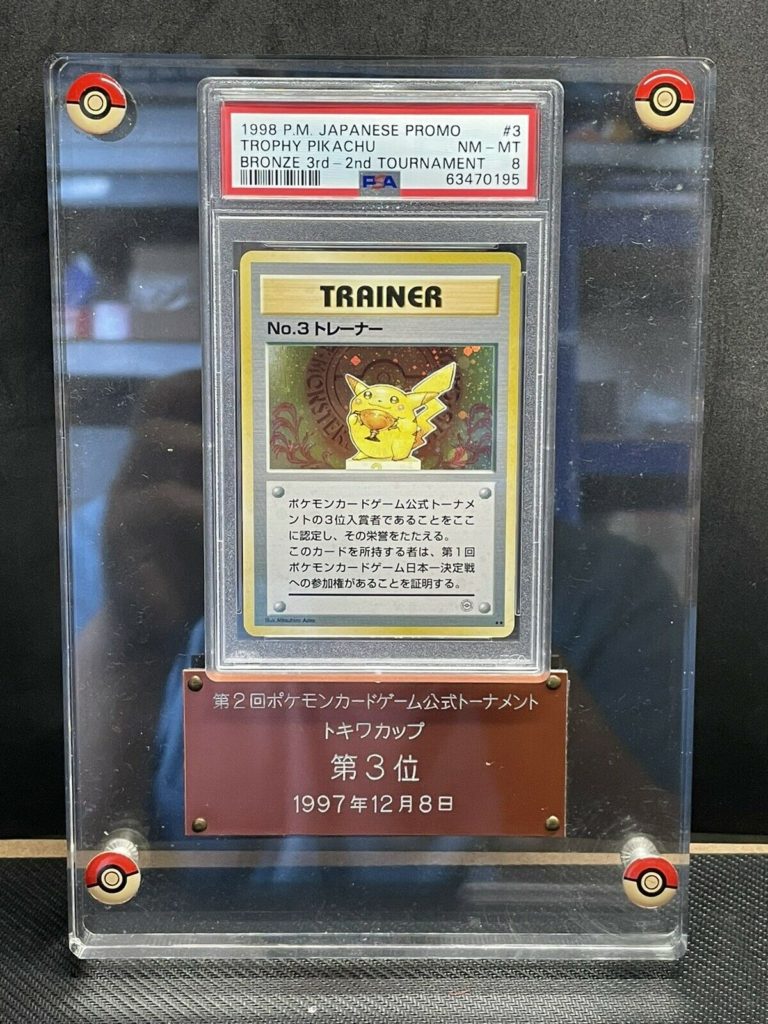
Below is a comparison of trophy case plaques from the 1st Official Tournament and the Charizard Mega Battle, along with their translations.
Commemorative Coin
All participants in the tournaments also received a golden Chansey coin.
This coin is easily confused with another coin from 1996. A silver Chansey coin was included with the 1996 Pokemon Starter deck.
Staff T-shirt
Staff members wore yellow-orange T-shirts at the event. The front of the shirt had a spiraling Poke Ball design, while the back simply said “Pocket Monster Card Game” in large text.

Legacy
This tournament paved the way for the Charizard Mega Battles that were held later in the same year. These tournaments would be far more competitive than the 1st Official Pokemon Card Tournament, but many of the practices around prizing and side event “corners” were continued in future events.
Sources
Special thanks to @ToineLay for some translation clarification on the Lizardon Mega Battle trainer text
- “1st Official Pokemon Card Tournament Report.” Pokemon Card Fan Club Vol.2 , 5 Sept. 1997, pp. 4–8.
Translated Scans:
Raw Scans (provided via Quinlan on Efour’s Discord)



